Measured Risks- Part 2
In our previous blog ‘Risky Play’ https://inspirationsnurseries.co.uk/risky-play/ -we defined the importance of risky play with the pre-school age group, but how can we incorporate measured risks within our youngest rooms?
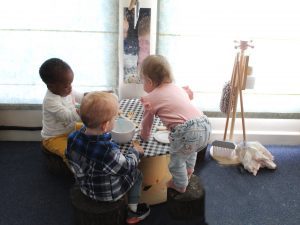
Physical Risks and Emotional Risks
At Inspirations Nurseries and Forest School we are committed to outdoor play adventurous and creative play. Taking risks isn’t a negative; it is about learning to safely manage tasks. Risky play can often be physical, but also includes taking emotional risks such as conquering fears and meeting new friends, and mental challenges such as learning a new routine or overcoming a fear.
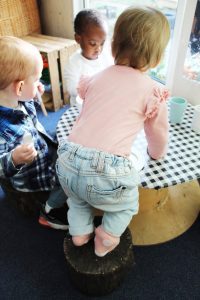 We work with our parents to find out each child’s ability and how they are challenged. During home visits and settling in sessions we get to know the families and can usually determine whether the parents take measured risks themselves. At nursery, the educators will be aware of children’s limits and which children need more support than others. Babies begin to take risks as soon as they begin exploring the world and their environment through crawling, rolling, walking, running and balancing.
We work with our parents to find out each child’s ability and how they are challenged. During home visits and settling in sessions we get to know the families and can usually determine whether the parents take measured risks themselves. At nursery, the educators will be aware of children’s limits and which children need more support than others. Babies begin to take risks as soon as they begin exploring the world and their environment through crawling, rolling, walking, running and balancing.
There are a few examples within the baby room where we have adapted our expectations to support children in their needs to explore. We noticed the babies climbing up the slide, instead of limiting this need to explore we supported them, removed their potentially hazardous socks and enabled them to learn their own limitation and boundaries.
Another example is from a few years ago involving our very low babies table. The rule was simply ‘no climbing on the platform’ but this need for them to explore was constant and persistent. And so, with support we allowed them to climb. Interestingly after this rule changed they stopped trying to climb on it due to the fact we enabled them to take their measured risk safely and they mastered that new skill.
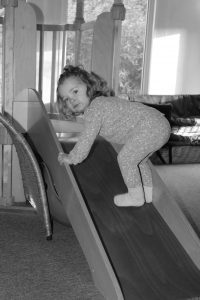
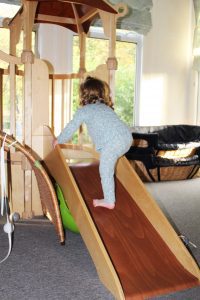
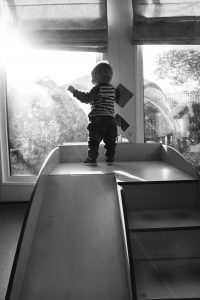
Supporting Adventurous Play
By allowing measures risks we are making our children more aware of their surroundings and abilities. Our aim is to let them find their limitations themselves instead of preventing learning opportunities. We often hear the words ‘be careful’ thrown around, but by simply changing our language we can help our children achieve their goals more safely. Here’s some ways we can use language to encourage our toddlers and children with new tasks-
- ‘Stay focused on what you’re doing.’
- ‘Take your time’
- ‘Find more space/do you need more space’
- ‘Do you feel stable/balanced/safe’
- ‘I’m here if you need me.’
- ‘What could you do differently?’
The space and freedom that comes with our outdoor setting allows children to hone in on their motor skills, build their muscles and indulge in their natural curiosity. In our toddler room garden we have created a separate area incorporating some trees for climbing, slopes and ropes with uneven surfaces. This is heavily supervised but allows the children to take more risks in a safe environment. It strengthens their resilience and prepares them for even more opportunities when they are able to go in the woods for forest school sessions when they turn 3. With support and the right environment there is no limit to the tasks they can accomplish.
‘The more risks you allow children to take, the better they learn to take care of them selves’
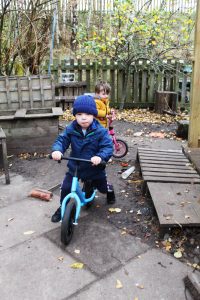 – Kayleigh
– Kayleigh